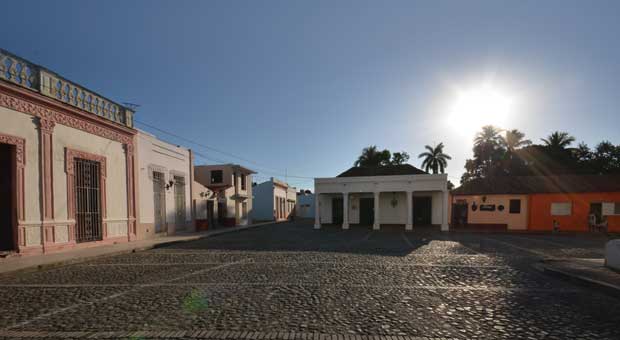Bayamo, capital city of Granma province, has a population of more than 220,000; is an important political, economic, social and cultural center with one of the richest histories in Cuba; and has played a prominent role during every stage of the country’s evolution. It was founded on Nov. 5, 1513.
It was there that the definitive struggle for Cuba’s independence was conceived and initiated, on Oct. 10, 1868, under the leadership of men like Carlos Manuel de Céspedes, Francisco Vicente Aguilera and Perucho Figueredo. For three months, the city was the headquarters of the first government of the Revolution. It was where Cuba’s national anthem was sung for the first time, on Oct. 20, 1868, and when Spanish forces marched on the city and its fall was imminent, its own inhabitants burned it down on Jan. 12, 1869. In subsequent stages of the independence struggle, the people of Bayamo—bayameses—continued to stand out in the ranks of the Cuban Liberation Army. For all of these reasons, the city was declared a national monument in 1935.
Bayamo also played a very significant role during the revolutionary struggles of the Republican period. On July 26, 1953, the city’s main military garrison was unsuccessfully assaulted by a group of young people of the “Centenary Generation” at the same time as Santiago de Cuba’s Moncada garrison. During the last stage of the struggle, from 1956 to1959, Bayamo was one of the main strongholds of the Rebel Army as it waged its guerrilla war in the mountains of the Sierra Maestra, even though the dictatorship had the largest deployment of its forces in this city.
The economic weight of Bayamo is centered on its industrial and agricultural activity. Its main products are sugar, construction materials, canned meat and more than 100 different dairy products. Ice cream in particular—especially appreciated for its quality and variety of flavors—has earned Bayamo the nickname of the “ice cream capital.” It is also known for its cheese and cremita de leche (milk fudge). A special mention should go to fontana, a type of cake made with liqueur and butter and sold at the El Paso and La Cubana establishments.
Two traditions distinguish Bayamo: the bicycles that were first introduced in the early 20th century and circulate by the hundreds through its streets; and its horse-drawn carriages, also numerous, which allow you to ride through the narrow streets and view some of the most important plazas and buildings, such as the house where Carlos Manuel de Céspedes was born; the colonial-era church known as Parroquial Mayor; the Plaza del Himno, the Cathedral, the Plaza de la Revolución, the main park and the Window of Luz Vázquez, the Cuban woman who inspired “La Bayamesa” song.
But a carriage ride is not the only way to see the sights of Bayamo. You can also do it by foot. In that case, an obligatory stop is the Bulevar, a pedestrian mall whose design and décor gives a modern touch to this colonial city’s historic district.
The city celebrates two popular fiestas: Las Enramadas and Carnival. The first dates back to the 1930s, and takes place during Holy Week, Holy Saturday and Easter Sunday. Along with dancing, festivalgoers enjoy roast pork with congrí (rice with black beans), root vegetables and salad, soft drinks, sweets, prú, beer and aguardiente. Carnival is commonly celebrated in August. For four days, bayameses and visitors enjoy traditional parades with floats and comparsas, fireworks, bands, dancing, games, conga lines, and, of course, carriage rides.
In short, that is a picture of Bayamo on the eve of its 500th birthday.















